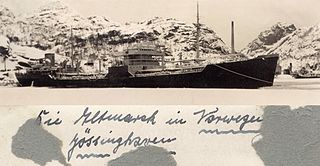 W
WAltmark was a German oil tanker and supply vessel, one of five of a class built between 1937 and 1939. She is best known for her support of the German commerce raider, the "pocket battleship" Admiral Graf Spee and her subsequent involvement in the "Altmark Incident". In 1940 she was renamed the Uckermark and used as supply tanker for the battleships Scharnhorst and Gneisenau during Operation Berlin before sailing to Japan on September 1942 as a blockade breaker.
 W
WUSS Conecuh (AOR-110) was a fleet replenishment tanker, originally built by F. Schichau, Danzig, in 1938 as a combination oiler and supply vessel or "Troßschiff" for the Kriegsmarine and christened as Dithmarschen. Taken over by British authorities at Bremerhaven when World War II ended, Dithmarschen was allocated to the United States Navy on 15 January 1946 by the Inter-Allied Reparations Commission.
 W
WThe German ship Doggerbank was an auxiliary minelayer and blockade runner of Nazi Germany in World War II.
 W
WEmpire Endurance was a 8,514 GRT steam cargo liner that was built in 1928 as Alster by Deschimag Werk Vulkan, Hamburg, Germany for the shipping company Norddeutscher Lloyd. In the years leading up to the Second World War Alster carried cargo and passengers between Germany and Australia. After the outbreak of war she was requisitioned by the Kriegsmarine for use as a supply ship.
 W
WSS Gedania was an oil tanker built in 1919-1920 at Kiel, Germany for the Standard Oil of New Jersey's transatlantic shipments to Germany, and registered under the flag of the Free City of Danzig. In 1940 the tanker was requisitioned by the Kriegsmarine and converted to a support ship for naval operations in the Atlantic. On the first mission in July 1941, to support commerce raiding by the German battleship Bismarck and cruiser Prinz Eugen, Gedania was captured and taken into service with the British Ministry of War Transport as Empire Garden. In 1947 it returned to commercial service as Southern Garden with the South Georgia Company, transporting whale oil from the southern Atlantic, and carrying supplies and personnel to the whaling stations. The tanker was broken up in 1960.
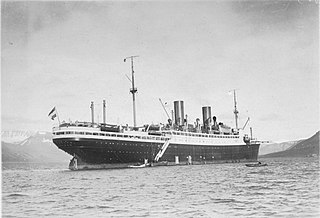 W
WSS General von Steuben was a German passenger liner and later a transport ship of the German Navy that was sunk during World War II. She was launched as München, renamed in 1930 General von Steuben, and renamed Steuben in 1938.
 W
WSMS Hessen was the third of five pre-dreadnought battleships of the Braunschweig class. She was laid down in 1902, was launched in September 1903, and was commissioned into the German Kaiserliche Marine in September 1905. Named after the state of Hesse, the ship was armed with a battery of four 28 cm (11 in) guns and had a top speed of 18 knots. Like all other pre-dreadnoughts built at the turn of the century, Hessen was quickly made obsolete by the launching of the revolutionary HMS Dreadnought in 1906; as a result, she saw only limited service with the German fleet.
 W
WThe Kulmerland was a supply ship of the Kriegsmarine that operated during the Second World War in the Indian Ocean and Pacific Ocean. It was named after the Kulmerland region of Prussia, with the city of Kulm, which in 1920 was made part of the Polish Corridor.
 W
WA Vorpostenboot was an auxiliary warship used by Germany in both World Wars. Many vorpostenboote also served in other roles, such as sperrbrechers and weather ships. During World War II, the Vorposentenboote were organized into several surface flotillas which were in turn attached to various German ports. Over 30 Vorpostenflotillas were established off German, Channel, Baltic and Scandinavian coasts.
 W
WMi Amigo was originally a three-masted cargo schooner, that later gained international recognition as an offshore radio station. She was built as the schooner Margarethe for German owners. A sale in 1927 saw her renamed Olga and she was lengthened in 1936. During the Second World War, she was requisitioned by the Kriegsmarine and served as an auxiliary ship between 1941 and 1943. In 1953, the ship was again lengthened to 133 feet 9 inches (40.77 m). In 1959, she was sold for conversion to a floating radio station and was renamed Bon Jour. Subsequently, she was renamed Magda Maria in 1961 and Mi Amigo in 1962. She served, intermittently, as a radio ship, until 1980, when she sank in a gale.
 W
WHDMS Niels Juel was a training ship built for the Royal Danish Navy between 1914 and 1923. Originally designed before World War I as a monitor, construction was slowed by the war and she was redesigned as a training cruiser. Completed in 1923 she made training cruises to the Black and Mediterranean Seas, South America and numerous shorter visits to ports in northern Europe. The ship often served as a flagship and occasionally was used as a royal yacht for visits to overseas possessions and other countries.
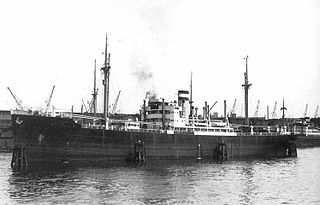 W
WMS Palatia was a German cargo liner, built in 1928. After serving for several years on the Hamburg America Line's route to the Caribbean, she was sold to the Soviet Union in 1940. Following the outbreak of war between Nazi Germany and the Soviet Union in June 1941, she was captured by the Germans and pressed into Kriegsmarine service.
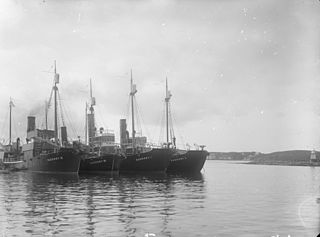 W
WRío Chira was 199-ton steel-hulled vessel with a long and varied history, serving under several names as a whaler, fishing boat, naval patrol boat, passenger/cargo ship and freighter between 1914 and 1981.
 W
WMS Rio de Janeiro was a German steam ship and a cargo ship, owned by the shipping company Hamburg Süd and home ported in Stettin. She was launched on 3 April 1914 as Santa Ines and later renamed Rio de Janeiro. Before World War II she carried passengers and freight between Germany and South America.
 W
WSaar was the first purpose-built submarine tender of the German Kriegsmarine, and served throughout World War II. She later served in the post-war French Navy as Gustave Zédé.
 W
WThe NRP Sagres is a tall ship and school ship of the Portuguese Navy since 1961. As the third ship with this name in the Portuguese Navy, she is sometimes referred to as Sagres III.
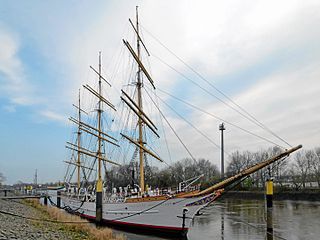 W
WSchulschiff Deutschland is a German full-rigged sail training ship, maintained as a historical monument and museum ship. She was employed as a school ship for the merchant marine beginning in 1927. The ship is moored at Vegesack, in the Federal State of Bremen, Germany. Since the name Deutschland was at the time of its construction already assigned to an unbuilt naval warship, its official name is Schulschiff Deutschland.
 W
WSpichern was a motor tanker that was built in Denmark for Norwegian owners and launched in 1935 as Krossfonn. In 1940 the German navy captured her, renamed her Spichern and converted her into an oiler. In 1944 she was damaged in an air raid and then scuttled.
 W
WThe destroyer HNoMS Troll, known locally as Torpedojager Troll, was the second destroyer built for the Royal Norwegian Navy, as the second ship of the Draug-class destroyers. She was built at the naval shipyard in Horten, with yard number 104. She was kept in service long after she was obsolete, and took part in the defence of Norway after the German invasion in 1940.
 W
WThe Usaramo was the first German passenger ship built after World War 1 and named after a location in the central highlands of German East Africa. She had a crew of 107, could carry 264 passengers and was powered by steam turbine. Her building number was 389 and her home port was Hamburg. Her sister ships were the Ussukuma of the Deutsche Ost-Afrika Linie and the Wangoni of the Woermann-Linie.
 W
WThe Ussukuma was a German passenger ship named after a location in the central highlands of German East Africa . On 6 December 1939, only a few months into the Second World War, she was scuttled off the coast of Argentina. In January 2008 her wreck was identified by the Argentine Navy in 70 metres of water, 62 miles off Necochea.
 W
WThe V 1605 Mosel, previously known as the M-1903, was a German trawler, minesweeper, and Vorpostenboot throughout World War II.
 W
WThe Dutch steam trawler Voorbode was a fishing vessel, until it was confiscated by the Germans during World War II and used for military transport. In April 1944, it was on its way from Oslo to Kirkenes when it faced mechanical problems, forcing it to seek repair in Bergen, Norway. Due to lack of control, the ship was allowed entrance to Bergen harbour loaded with 124,000 kg (273,000 lb) of explosives, even though the ship did not satisfy security regulations and should not have been allowed into major cities with this cargo.
 W
WVorpostenboot, also referred to as VP-Boats, flakships or outpost boats, were German patrol boats which served during both World Wars. They were used around coastal areas and in coastal operations, and were tasked with – among other things – coastal patrol, ship escort, and naval combat.
 W
WAdolf Vinnen was a weather ship that was built in 1929 as the fishing vessel Gustav Adolf Kühling. She was renamed in 1930. The ship was requisitioned by the Kriegsmarine in March 1940, serving until 23 October 1940 when she was sunk by HMS Matabele, HMS Punjabi and HMS Somali.
 W
WAugust Wriedt was a weather ship that was built in 1929 as the fishing vessel Dolly Kühling. She was renamed August Wriedt in 1935. The ship was requisitioned by the Kriegsmarine in 1940 and captured by HMS Malvernian on 29 May 1941. She served as HMS Maria, a wreck dispersal vessel, until 1950 and was scrapped in 1951.
 W
WSMS Zähringen was the third Wittelsbach-class pre-dreadnought battleship of the German Imperial Navy. Laid down in 1899 at the Germaniawerft shipyard in Kiel, she was launched on 12 June 1901 and commissioned on 25 October 1902. Her sisters were Wittelsbach, Wettin, Schwaben and Mecklenburg; they were the first capital ships built under the Navy Law of 1898, brought about by Admiral Alfred von Tirpitz. The ship, named for the former royal House of Zähringen, was armed with a main battery of four 24 cm (9.4 in) guns and had a top speed of 18 knots.